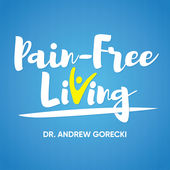
Itis's (inflammation) are preventable!
Bursitis, tendonitis, arthritis, capsulitis, you name it, these terms tell us a joint and its' surrounding soft tissues are functioning inefficiently and thus, creating an inflammatory process. The great news is joint and soft tissue inflammation is preventable. How exciting!
Lets talk basics. A joint forms when two bones meet and there’s a space in which 3D movement can occur. When a joint moves, soft tissues respond to control that movement: muscles, tendons, ligaments, nerves, fascia, etc.
There are three general scenarios in which a joint can move and Goldilocks can help us understand it best:
- Joints move too little
- Joints move too much
- Joints move just right
What happens when the movement at a joint is too much or too little?
Now, when a joint moves in the way it was designed, that area is unlikely to become irritated and inflamed. However, when the amount of joint motion (limited or excessive) is altered, it affects the optimal timing and sequence in which bones move to create ideal movement actions and reactions. In turn, there is increased stress and friction at the joint which over time becomes agitated and creates inflammation–not only at the joint itself, but in the surrounding soft tissues (bursa, tendon, capsule, etc)…and possibly all the way at the other end of the body?!?!
So, how does optimal joint motion become altered?
Previous injuries, repetitive stresses, lack of movement, and improper conditioning are a few common causes of dysfunctional joint movement. For instance, lets say you sprain your ankle and as a result, you lose the ability to bend your ankle (dorsiflex). The reaction is considerably more complex than this but lets just KISS. The lack of motion at your ankle will now force nearby joints to move more than they were designed to (joints moving too little / too much) The joints moving too much become overloaded, which again, stress both the bones/joints and the surrounding soft tissues.
As a result of this altered and excessive joint movement, you may develop plantar fasciitis. As you can see, this overload of the plantar fascia, has nothing to do with the plantar fascia itself, it’s simply an inflammatory response to the situation of a “bum” ankle. The traditional approach to pain management will treat the plantar fascia by putting a boot on it or limiting its movement in some way, which effectively treats the site of pain, which ineffectively addresses the source of pain.
Great, I’m starting to get this but how do I improve it?
Here’s the deal (again, an oversimplification), the way you get a joint to move less is to make an another one move more. So back to our ankle sprain. If the limited motion at the ankle caused the excessive motion at the plantar fascia, won’t restoring the ankle motion simultaneously reduce the amount of movement (stress) in the plantar fascia? Light bulb turns on, sweet.
Here’s the deal, the human body is self healing. Authentic, balanced movement is required at a joint for optimal function and recovery. Things don’t hurt by chance, there is always a reason and we need a different way of thinking about the whole body as opposed to getting stuck on the part. Your best bet at creating a healing environment within your body is to locate a Fellow of Applied Functional Science in your area at the grayinstitute.com.
A special thanks to Gary Gray and David Tiberio for teaching us how to think differently!
Author Michael Rizk, FAFS



